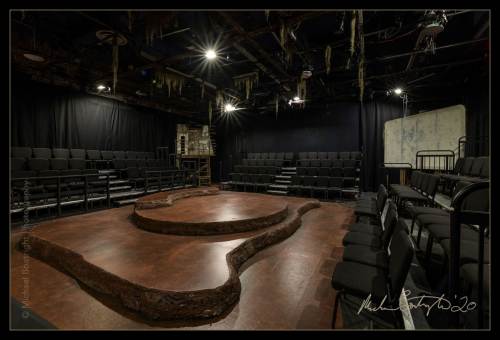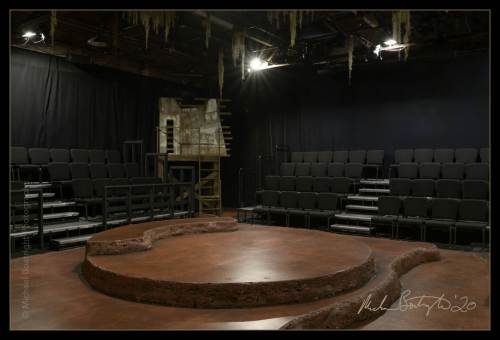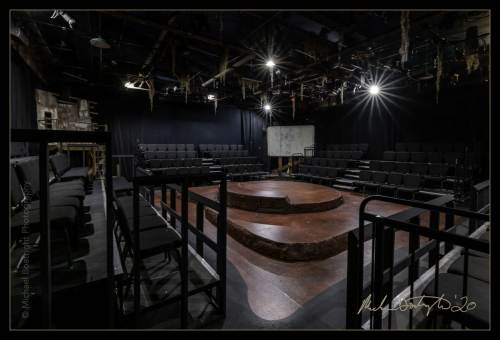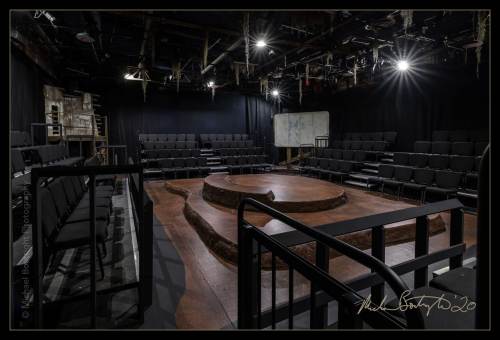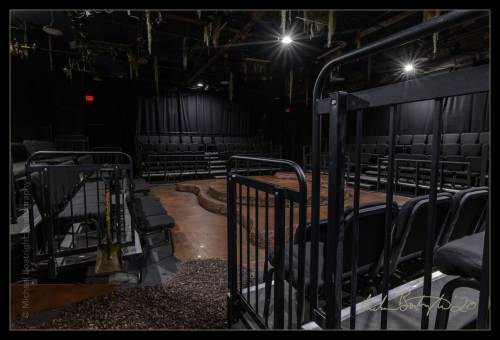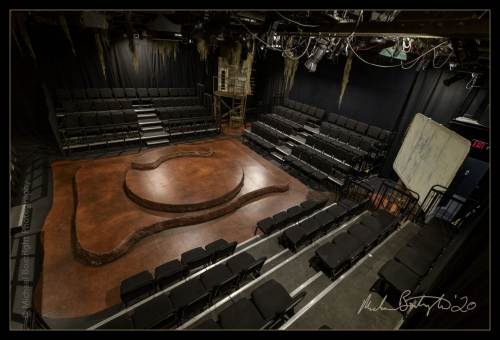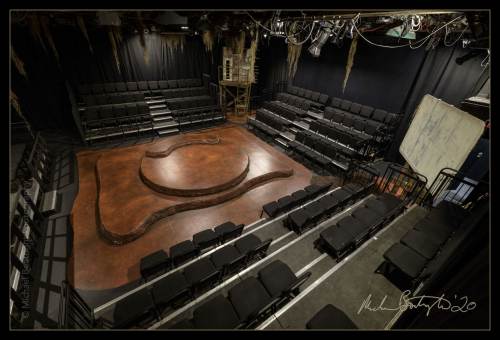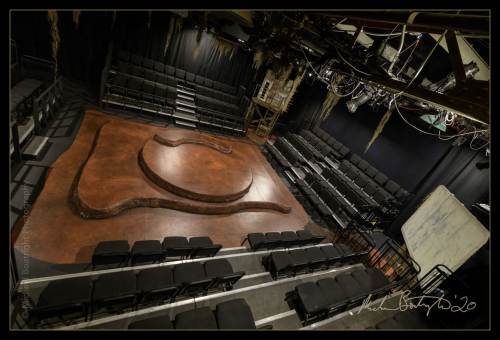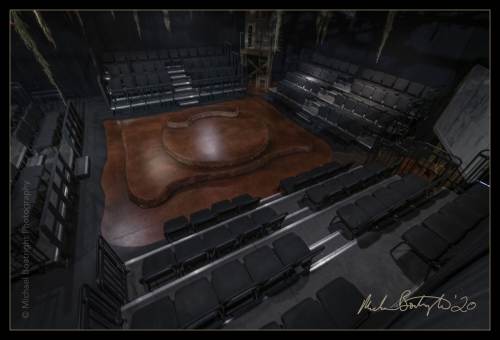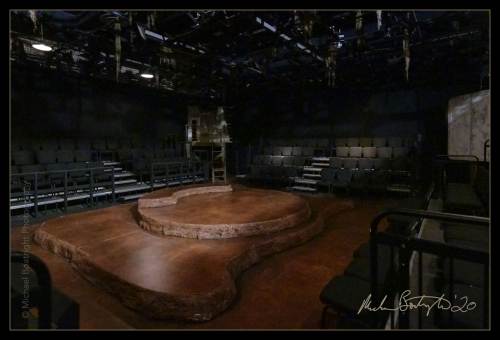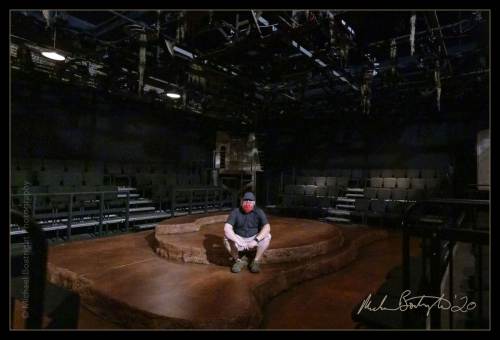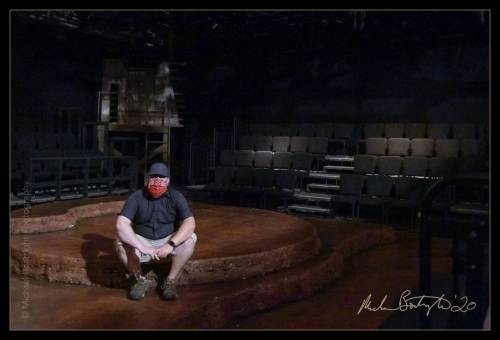Actor's Express
887 W. Marietta St NW, Suite J-107, Atlanta, GA 30318
| Resident Company(ies) | Actor's Express |
| Website | www.actors-express.com |
| Seats | 145 (black box) |
These photographs may include works and designs that are copyrighted by others; used with permission. #darkhousesatlanta
Actors Express (Photographed July 16, 2020)
Actor's Express produces some of the finest shows in Atlanta and I am ashamed to say that it took the COVID19 crisis to get me into the theater. I can make lots of excuses, but the simple truth is, like many, I take the depth and breadth and quality of live theater in Atlanta for granted.
These photos show James Ogden’s set design for the show “The Brothers Size” by Tarell Alvin McCraney, directed by Eric J. Little (whose work I love).
In an interview yesterday I was asked (by Lois Reitzes!) about my approach to photographing these dark stages. My initial aesthetic was to only use the light provided by the ghost light, or house safety lights. But as this project evolved, I realized that something was missing because depending on the theater configuration and location, the ghost light didn’t light the house-where all the patrons sit and enjoy the show—very well, if at all. Ghost lights are really to prevent someone walking onto the stage in the dark from tipping on loose props, equipment, etc. and from falling off the edge of the stage.
I was missing a REALLY important part of the story!
Live theater works through the interaction of the actors AND the audience. Without actors, there’s no story told. Without audience, there’s no story heard.
I listened to a young actor a couple of months ago (in another interview on Lois’ “City Lights”) being asked about his experience doing live theater over live streaming (in “boom” by Peter Sinn Nachtrieb, performed in June by DramaTech Theatre). His response was that he missed having the feedback from the audience—seeing their eyes, hearing their coughs and shuffles in their seats.
In the theater, when a “house” is “dark,” it means that there are no performances that day or night. Most houses are dark on Mondays, for example. It doesn’t mean nothing is going on, or no work is being done, simply that there are no shows.
So I think adjusting my aesthetic to capture the emptiness and loneliness of each house is an important part of telling the story that a significant part of our culture is curtained. Our houses are dark and important stories are not getting told.
I did a back of the envelope analysis yesterday: by my count, the 25 houses I’ve photographed represent approximately 14,000 empty seats. If we extend this out for a bit—and it is not unreasonable that it might—from the current four months dark to a full season, I estimate that’s a loss of at least $50MILLION dollars in ticket sales (and probably a lot more). And in live theater, ticket sales account for only a percentage of the cost of producing shows. The philanthropy that fills in the gap plus the ticket sales add up to a LOT of impact to our local economy.
But that philanthropy is very stressed already and it’s the people—and there’s no people like show people—who are hit the hardest.
Originally posted to Facebook, August 7, 2020

